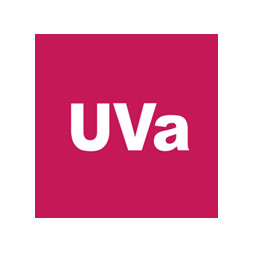Por favor, use este identificador para citar o enlazar este ítem:https://uvadoc.uva.es/handle/10324/75236
Título
Domestication of wild-growing Turkey tail mushroom (Trametes versicolor) from Ethiopian forests on augmented agro-industrial byproducts
Autor
Año del Documento
2024
Editorial
Springer
Descripción
Producción Científica
Documento Fuente
Mycological Progress, 2024, vol. 23, n. 1
Resumo
Despite being extensively studied as a white-rot fungus, there have been no efforts to explore and cultivate the high-yielding
wild Trametes versicolor strains in Ethiopia. Thus, this study was initiated to assess the growth performance of T. versi-
color on various growth media. Accordingly, ten substrates (S1–S10) were formulated by a combination of agro-industrial
by-products that mainly constituted sugarcane wastes and animal manures. The effect of substrates on yields, biological
efficiencies, and nutritional compositions was examined. The mushroom developed a white mycelium on the growth media.
T. versicolor cultivated on the S5 blend, comprising 80% sugarcane bagasse, 12% horse manure, and 8% poultry manure,
exhibited the most substantial fruiting body yield (158.33 g/500 g bag) and the highest biological efficiency (31.5%), with an
optimal C:N ratio of 31:1. It has shown good mycelial growth, short colonization, and short pinhead formation time compared
to other substrates. S7, lacking nitrogen supplementation, yielded low biological efficiency and fruiting bodies at 11.50%
and 57.67%, respectively. The crude protein, fiber, low fat, and carbohydrate content ranged from 7.46 to 14.65%, 12.89 to
18.38%, 0.42 to 0.53%, and 48.75 to 66.75%, respectively. Notably, the highest nutritional values, excluding carbohydrates,
were obtained from S5, while the sugarcane bagasse had the highest carbohydrate content among substrates. Consequently,
S5 emerged as a suitable medium for cultivating wild T. versicolor mushrooms, particularly in regions abundant in poultry,
horse manures, and sugarcane bagasse. Therefore, S5 represents an optimal substrate for T. versicolor cultivation, offering
improved productivity and nutritional quality at reduced costs.
Materias Unesco
31 Ciencias Agrarias
Palabras Clave
Agro-industrial byproducts
Animal manures
Sugarcane bagasse
Forest resources
Yields
ISSN
1617-416X
Revisión por pares
SI
Patrocinador
Publicación en abierto financiada por el Consorcio de Bibliotecas Universitarias de Castilla y León (BUCLE), con cargo al Programa Operativo 2014ES16RFOP009 FEDER 2014-2020 DE CASTILLA Y LEÓN, Actuación:20007-CL - Apoyo Consorcio BUCLE
Version del Editor
Propietario de los Derechos
© 2024 The Author(s)
Idioma
eng
Tipo de versión
info:eu-repo/semantics/publishedVersion
Derechos
openAccess
Aparece en las colecciones
Arquivos deste item
 Exceto quando indicado o contrário, a licença deste item é descrito como Atribución 4.0 Internacional
Exceto quando indicado o contrário, a licença deste item é descrito como Atribución 4.0 Internacional











